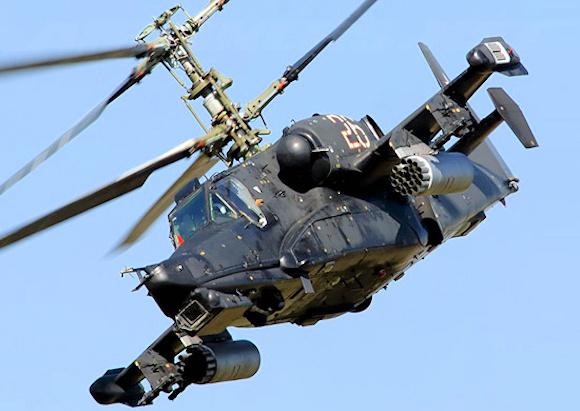Since the Second World War, and in particular since the Vietnam War, the helicopter has proven to be a fundamental military vehicle in the war events of the late twentieth and twenty-first centuries. Its success is mainly linked to the versatility with which it can carry out various missions: from troop transport to anti-submarine operations, from the rapid evacuation of the wounded to attack and support missions to the infantry, all without the need for a take-off and landing runway. . Consequently, the specificity of each mission required the diversification of the configurations of these vehicles from a structural, propulsive and avionic point of view, as also happened in the world of fixed-wing aviation.
Even within the same "operational area", different philosophies of use have emerged which have led to a further differentiation of the means. The architecture of helicopter rotors, for example, is an aspect that shows a wide variety of designs, which can even be found in helicopters with the same task. Just think of the Boeing AH-64 “Apache” and the Kamov KA-50 (opening photo), both conceived to be attack helicopters but developed with totally different design choices.
General information on rotors

The rotor is the mechanical element composed of several blades which, by means of a rotation, produces the aerodynamic force necessary for piloting and supporting the helicopter. It is composed of a mechanical shaft, set in rotation by the aircraft engines, on which a hub is mounted. The blades are applied to the hub. The generation of aerodynamic force is made possible precisely by the rotation of the blades: while in the case of airplanes the air flow hits the fixed wings due to the forward motion of the aircraft itself, in the case of the helicopter it is the "wings" ( ie the blades) to move, cutting through the surrounding air (hence the definition of rotary wing means).
Another key component of the rotor is the swash plate, that is the mechanical organ which allows the helicopter to move in any direction by modifying the direction in which the resulting aerodynamic force develops and the intensity of this force. Basically, the swash plate can perform two actions: modify the incidence of all the rotor blades or modify the incidence of the blades in a different way during rotation. The first command is called collective step and allows to vary the value of the lift produced, and consequently is the command responsible for the change in altitude of the helicopter. The second command is said cyclic step and its purpose is to tilt the rotor and consequently the resulting aerodynamic force, in such a way as to develop a lateral force component that makes it possible to move the vehicle in the four horizontal directions (forward, backward, right and left). In fact, the cyclical variation in the incidence of the blades means that some blades develop more lift than others and this causes the rotor to tilt in the direction in which less lift is developed.
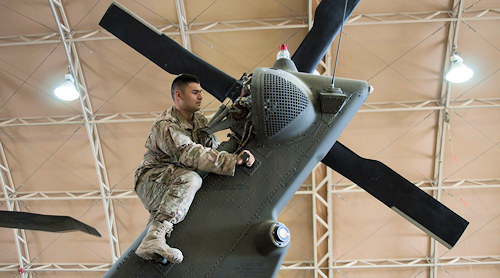 To all this we must add the need to introduce a second rotor that produces a force (and therefore a moment) capable of counteracting the counter torque acting on the helicopter structure. In fact, for the third principle of dynamics, the fact of applying a torque that sets the helicopter blades in rotation means originating a reaction torque having an opposite direction applied to the fuselage, involving the rotation of the vehicle around its yaw axis (axis vertical).
To all this we must add the need to introduce a second rotor that produces a force (and therefore a moment) capable of counteracting the counter torque acting on the helicopter structure. In fact, for the third principle of dynamics, the fact of applying a torque that sets the helicopter blades in rotation means originating a reaction torque having an opposite direction applied to the fuselage, involving the rotation of the vehicle around its yaw axis (axis vertical).
In classic configuration, the second rotor is placed at the tail of the helicopter and has the sole task of canceling this reaction torque; therefore, the main rotor is distinguished from the tail rotor, having different tasks. Such architecture was first made by Igor Sikorsky in 1940.
The tail rotor is mounted in the vertical direction (perpendicular to the main rotor), so that the lift produced originates a torque that cancels the reaction torque.
A second solution to solve the reaction torque problem consists in equipping the helicopter with counter-rotating coupled rotors, that is, one or more pairs of main rotors rotating in the opposite direction. In this way, the reaction pairs produced will have an opposite direction and consequently cancel each other out, without there being therefore the need to introduce a tail rotor.
This architecture has four possible configurations:
-
Tandem rotors
-
Coaxial rotors
-
Intersecting rotors
-
Transverse rotors

Analysis of the possible architectures for attack helicopters
We come to the case of attack helicopters. Normally, the rotor architectures chosen for this medium are that classic or, in some cases, the one with coaxial counter-rotating rotors. But what are the advantages and disadvantages of both configurations?
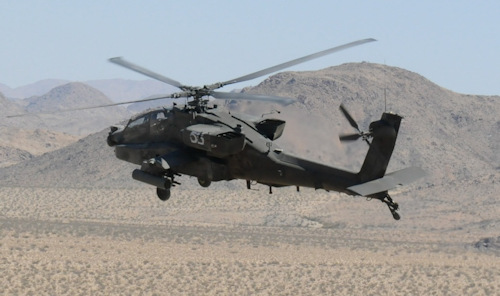 Our analysis can begin by comparing the power consumed from the two assets. In the case of the standard configuration, part of the power supplied by the motor is transferred to the tail rotor to balance the counter torque, therefore without this being used to support or move the helicopter. In other words, it can be considered as a "wasted" power.
Our analysis can begin by comparing the power consumed from the two assets. In the case of the standard configuration, part of the power supplied by the motor is transferred to the tail rotor to balance the counter torque, therefore without this being used to support or move the helicopter. In other words, it can be considered as a "wasted" power.
In the case of coaxial architecture, on the other hand, both rotors are main, that is, both produce an aerodynamic force useful for propulsion of the helicopter. Consequently, with the same power supplied by the engine and the shape and structure of the blades, a helicopter with coaxial rotors will be able to produce a greater overall lift, which translates into a greater transportable load and greater thrust in motion. advancement.
In the case of the classic configuration, in order to obtain the same load capacity, the rotor would have to be enlarged, but this would cause problems of compressibility at the ends of the blades. In fact, the tangential speed at each point of the blade is given by:

By increasing the radius, speeds close to that of sound would be reached at the ends. This would lead to the onset of shock waves and the consequent aerodynamic wave resistance, damaging the structure and aerodynamics of the blades.
 The lift produced by the coaxial configuration, however, is not double compared to the standard case but simply greater, since the aerodynamic interaction between the blades of the two rotors must be considered.
The lift produced by the coaxial configuration, however, is not double compared to the standard case but simply greater, since the aerodynamic interaction between the blades of the two rotors must be considered.
From an aerodynamic point of view, coaxial rotors are able to better manage the effects caused by lift asymmetry.
To explain this phenomenon, let's consider a helicopter with a single main rotor in advanced flight. The rotor blades can be divided into two groups for each rotation cycle: le advancing blades are those that move in the same direction of advance as the helicopter, while the receding blades they move in the opposite direction to that of advancement of the vehicle. As a result, the forward blades will feel a relative wind speed equal to the sum of their tangential speed plus the helicopter's forward speed, while the receding blades will feel a relative wind speed equal to their tangential speed minus the forward speed of the helicopter. 'aircraft. Consequently, since lift is related to the square of the relative speed - -, the forward blades will produce more lift than the receding ones (“lift asymmetry”), causing the creation of a dangerous rolling moment for the vehicle.
-, the forward blades will produce more lift than the receding ones (“lift asymmetry”), causing the creation of a dangerous rolling moment for the vehicle.
The solution found to reduce this phenomenon consists in leaving the rotor blades free to perform a vertical movement through the application of hinges, called "flapping”, Which by modifying the angles of incidence manages to minimize the difference in lift between the two regions. In fact, the receding blades will tend to move downwards, consequently increasing their angle of attack due to the component of relative vertical velocity upwards and therefore the lift produced. The forward blades, on the other hand, will tend to move upwards, decreasing the angle of attack due to the downward relative vertical velocity component and therefore the lift produced.
The problem with this balancing system arises from the fact that the higher the forward speed of the helicopter, the lower the relative speed perceived by the receding blades, therefore the greater the angle of attack must be in order to produce the required lift. balance the asymmetry. However, in addition to a certain angle of attack the blades stall, i.e. the fluid vein detaches from the airfoil causing a complete loss of lift and an increase in aerodynamic drag. Such a phenomenon, called stall of the receding blade, results in a sudden overturning of the helicopter (the lift produced by the forward blades produces a moment with respect to the roll axis of the aircraft) with consequent loss of control. For this reason, every helicopter has a certain Never Exceed Speed, i.e. a feed rate that cannot be exceeded.
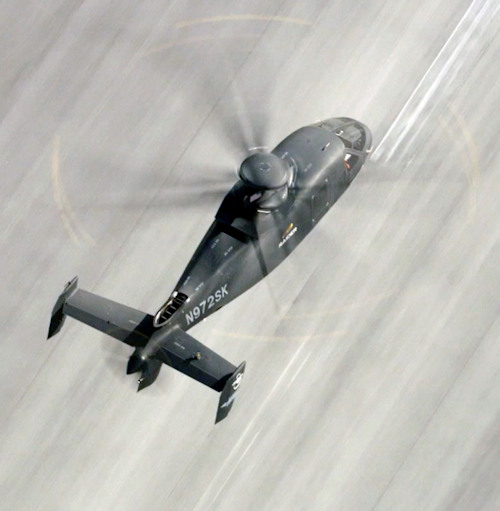 In the configuration with coaxial rotors, on the other hand, the stalling of the receding blades occurs in opposite regions in the two rotors, since they rotate in the opposite direction. Consequently, no lift imbalance is created between the two halves and no rolling moment arises that would have caused the helicopter to overturn. There Never Exceed Speed in the case of helicopters with this configuration it is therefore greater, since the stalling of the receding blade is not as binding as in the standard configuration, however it is always limited by the speed that triggers the compressibility phenomena at the ends of the blades.
In the configuration with coaxial rotors, on the other hand, the stalling of the receding blades occurs in opposite regions in the two rotors, since they rotate in the opposite direction. Consequently, no lift imbalance is created between the two halves and no rolling moment arises that would have caused the helicopter to overturn. There Never Exceed Speed in the case of helicopters with this configuration it is therefore greater, since the stalling of the receding blade is not as binding as in the standard configuration, however it is always limited by the speed that triggers the compressibility phenomena at the ends of the blades.
Having spoken of "flapping", it is therefore necessary to underline a problem related to this aspect present in counter-rotating coaxial rotors. The blades of the individual rotors must be free to flap, in such a way as to minimize the lift asymmetry. Consequently, the two rotors must be placed at a certain distance from each other, to avoid catastrophic contact between their blades. This means that the overall height of a helicopter with this configuration will be much larger than that of a helicopter with a classic configuration.
Conversely, the fact that they do not need a tail rotor allows them to be much more compact, which makes coaxial architecture an interesting choice also for embarked helicopters. Furthermore, one of the main causes of helicopter loss is related to damage to the tail rotor or the transmission that powers it.
In a military context, the fact of not having the tail rotor therefore makes the carrying out of the mission safer, as well as reduces the risk of being hit in vital parts of the machine. In fact, it is possible to better armor the area in which the transmission shafts and other mechanical components of the rotors are present without burdening too much on the weight, considering the greater concentration of these devices compared to the case of the standard configuration and therefore the smaller surface it requires. greater protection.
Finally, a further advantage of the coaxial configuration is the less noise product compared to the standard configuration. An important source of noise in a helicopter is the interaction between the eddies produced by the main rotor blades with the tail rotor and the high rotation speed of the latter, which is necessary due to its small size. By eliminating the tail rotor, the helicopter is therefore decidedly quieter, while producing greater noise in the area of the two main rotors compared to the single-rotor architecture.
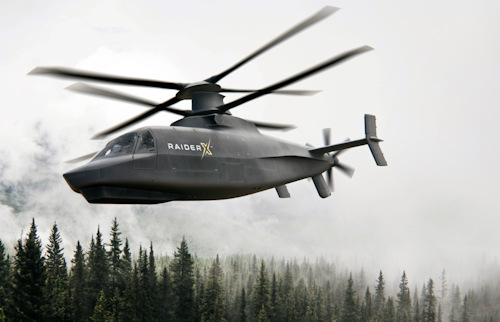 Conclusions
Conclusions
Most of the attack helicopters developed have a classic architecture, with main rotor and tail rotor, despite the different advantages shown by the configuration with two coaxial counter-rotating main rotors. The motivation lies in the mechanical complexity required by the coaxial architecture. Just think of the need to implement two swashplates, one for each rotor, capable of tilting in a differential way and with perfect synchronism and mechanical couplings capable of providing opposite torques to the two rotors. All this results in the design of complex mechanical systems, therefore more prone to failures and more difficult to maintain.
The component relating to the Improvement necessary to design systems of such complexity, currently owned by few companies in the world. Suffice it to say that the only military attack helicopters that fully exploit this technology are produced by Kamov, while on the "western front" Sikorsky has developed the S-97 "Raider" (currently a finalist with the "Raider X" prototype in the competition for the US Army Future Attack Reconnaissance Aircraft).
Photo: Russian Fed MoD / web / US Army / Lockheed Martin

